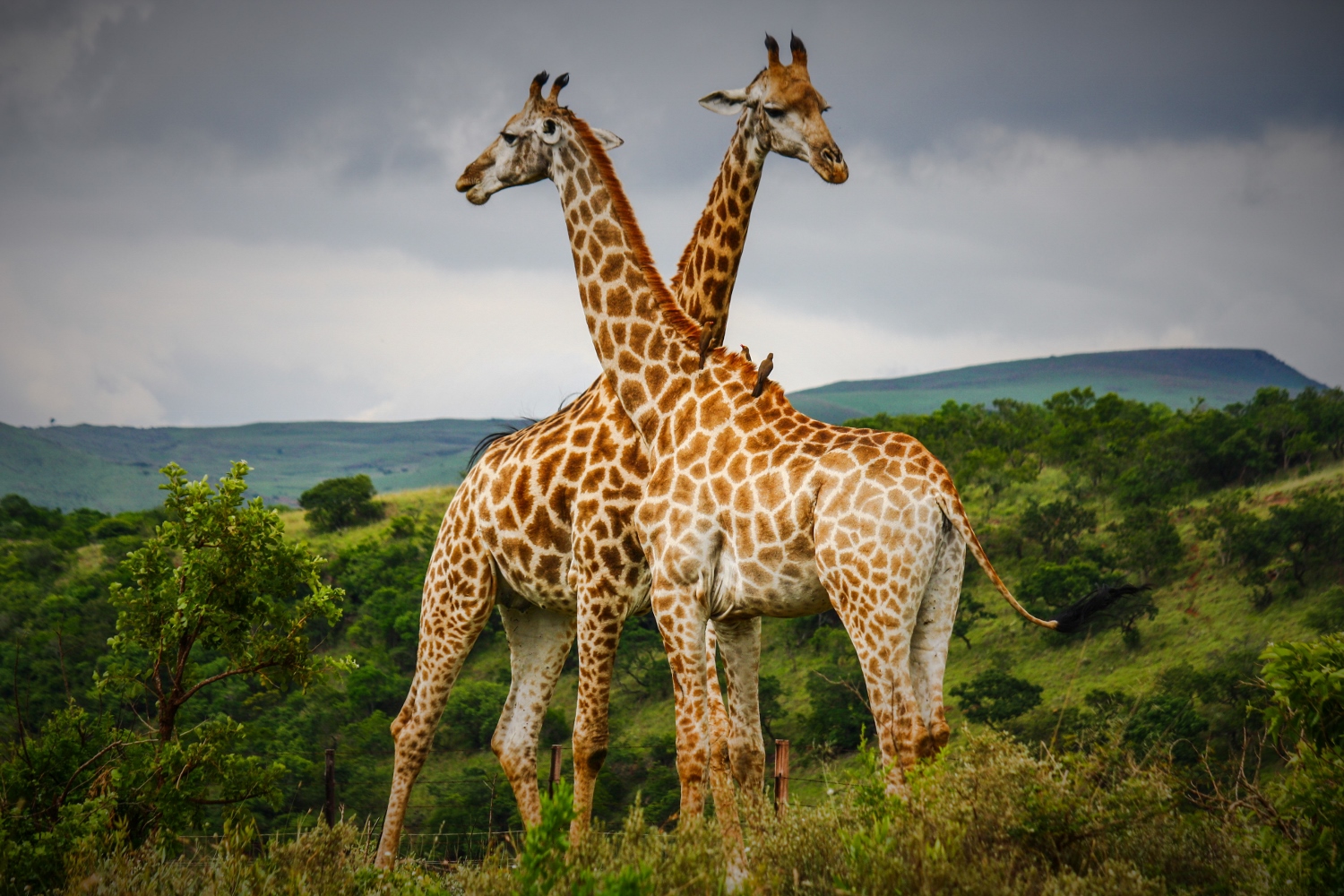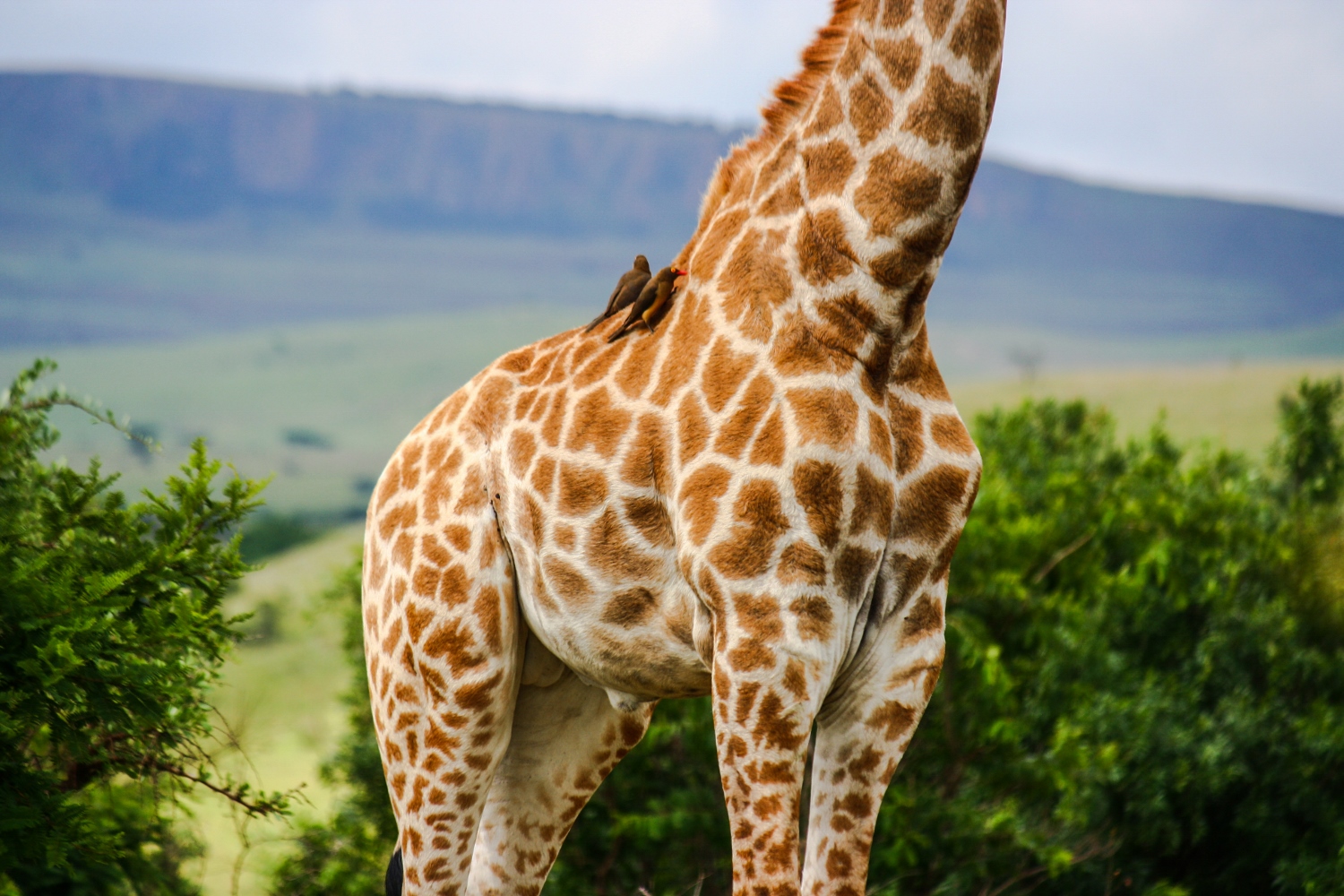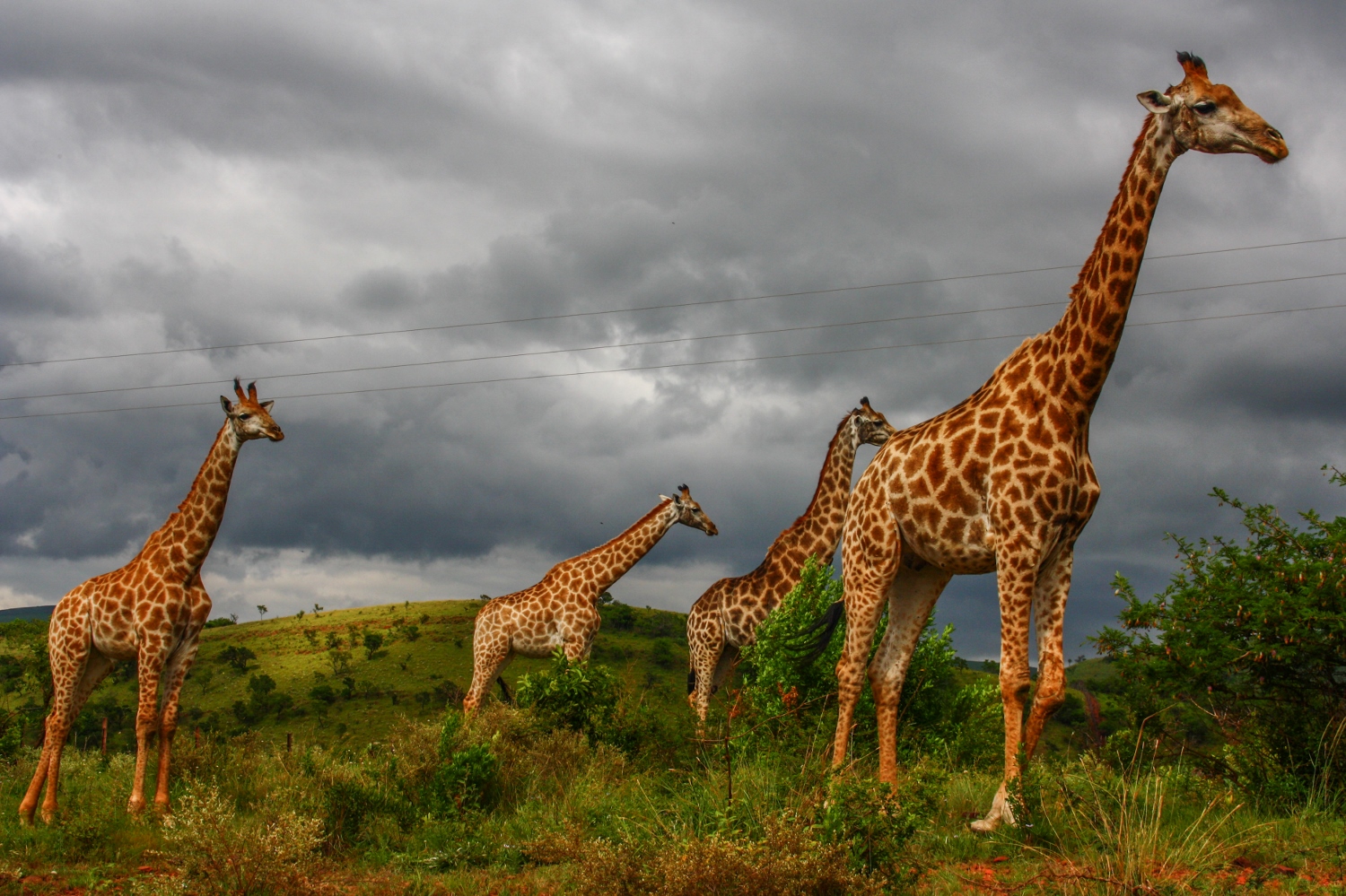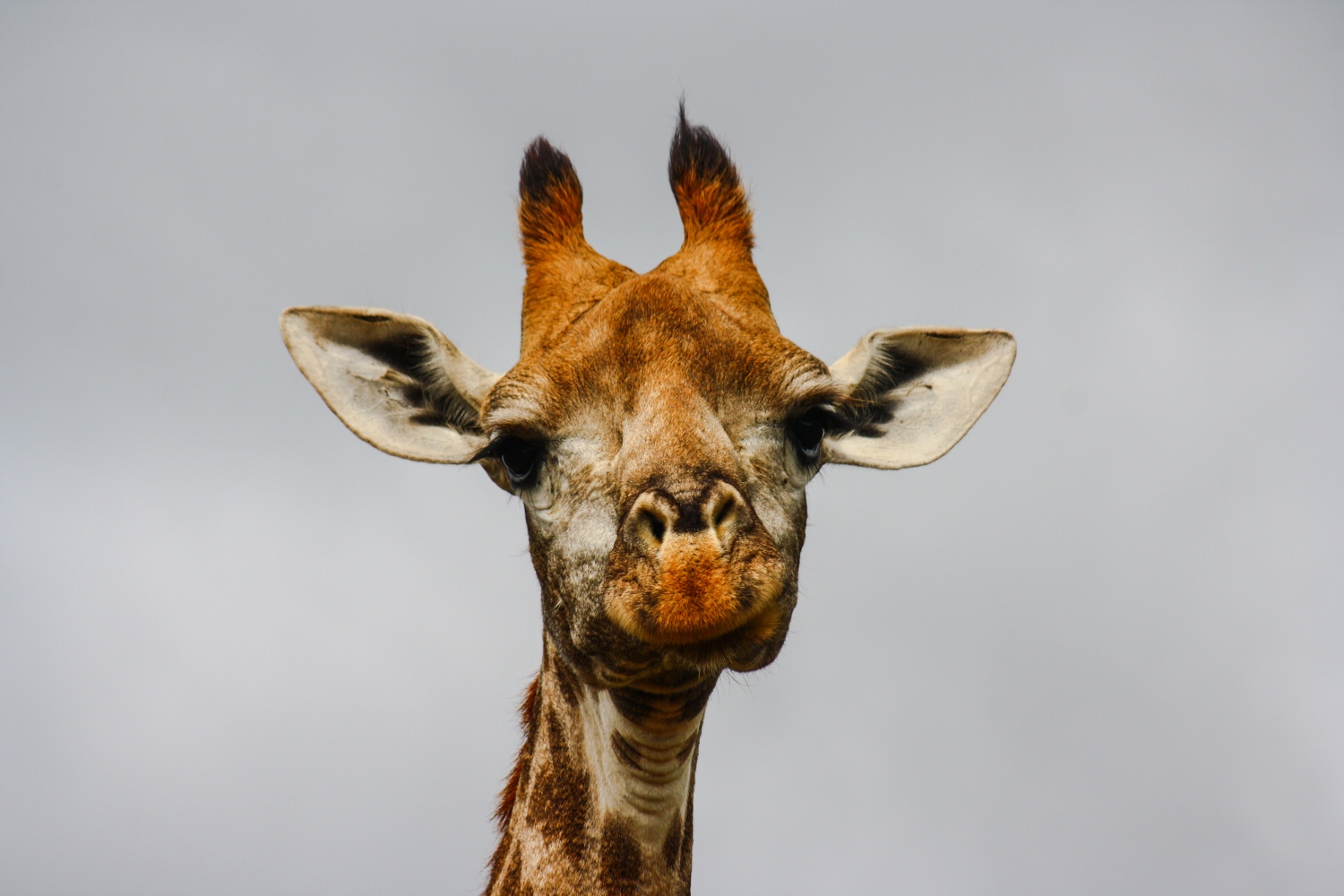Yap, this post is about giraffes.
Observing them happily munching on shrubs and trees in their natural habitat makes me happy in a sit-in-a-car-for-hours-and-leave-your-house-forever-and-move-from-a-nature-reserve-to-a-nature-reserve-kind-of-way. I thought that by giraffe #18 I will stop squealing in excitement, but no…every time it is like the first time I spotted one on the side of the road in Namibia.
The name Giraffe Camelopardalis means ‘One who walks quickly, a Camel marked like a Leopard’. One would think that it is easy to see giraffes in the wild as their head usually sticks over the vegetation, but if you are not paying attention it is easy to drive by. Somehow their skin pattern camouflages them well. So, how tall is a giraffe? Unbelievably tall! The first time I saw one I had to pinch myself. At 6 ft, the newborn baby giraffe is taller than most humans and is as high as the legs of a fully grown giraffe whose height can reach 20′ or 6 m tall. Because of its long legs giraffes can run as fast as 35 miles/hr over short distances and 10 miles/hr over longer ones. But the giraffe’s height can be a disadvantage as well. It is difficult and dangerous for a giraffe to drink at a water hole. To do so giraffes must spread their legs and bend down in an awkward position that makes them vulnerable to predators like Africa’s big cats. That’s why giraffes only drink once every several days. They get most of their water from the luscious plants they eat. Needless to say, the giraffe has a long tongue ~ up to 45 cm. It is specially adapted to allow giraffes to forage on trees that other animals would avoid, such as thorny acacias. Ouch!
Thinking that giraffes spend most of their lives standing up is mind boggling. They even sleep and give birth standing up. The newborn babies fall from 6′ when born! About the sleep ~ giraffes only spend between ten minutes to two hours asleep/day, one of the shortest sleep requirements of any mammal. Another cool thing is that no two giraffes have the same spot pattern.
Did you notice the little birds perching on the giraffes’ backs on the top photo?
Here, I will give you a better view. These birds are called red billed oxpeckers. They feast on ticks, the perfect natural pest controllers. Not only do the oxpeckers clean the ticks off but they also alert the giraffes of imminent danger.
While giraffes are usually found in groups, the composition of these groups tends to be open and ever changing. They have few strong social bonds, and usually switch members every few hours. A ‘group’ of giraffes has been defined as ‘a collection of individuals that are less than 1 km apart and moving in the same general direction’. The giraffes below appeared to be a group. We saw them grazing together for quite a while and playfully ‘necking’ each other ~ slapping the sides of each other’s bodies with their heads.
The giraffes we saw in the wild were usually as curious about us as we were about them. We did a lot of staring into each others’ eyes, that looks like this from our vintage point:)
Today we are saying good bye to Africa and all its wonders and I am somewhat melodramatic. In the course of our three months here I have fallen in love with this continent. Our new South African friend Mashca thinks that we will go back home, get bored and fly back here in no time.
Only time will tell:)
~M





страшно ни запали въображението … май вече сме в Африка
Radvam se. Na nas Africa tolkova mnogo ni zapali vaobrazenieto che napisahme ziala kniga. Dezata po-tochno. Nadiavam se da ia ‘poblikuvame’ skoro. Ste vi izpratim edno kopie:)
ochakvame knigata s netarpenie….obichame vi mnogo…
I loved the animals very much. I would love to see what you saw. The animals are very cute. My favorite was the giraffes. The zebras are funny. Are you ready to go back home?
Hi Lena,
my favorite animal was the giraffe too and all animal babies because they are so cute, like baby elephant baby rhino and baby giraffe. We also saw baby zebras! Do you have any pets at home? I miss my cat but I am not ready to go home yet. Maybe soon…